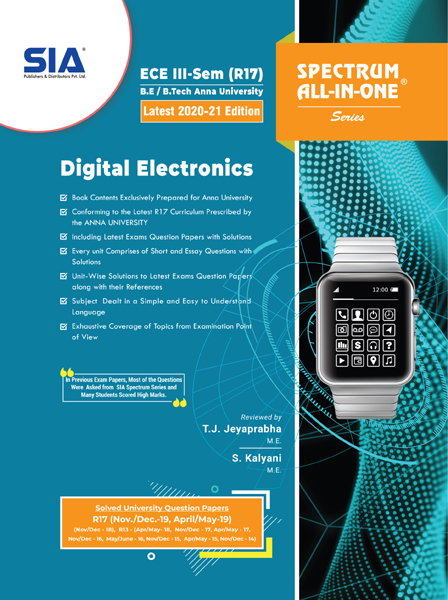

Note: Please check your Spam or Junk folder, in case you didn't receive the email with verification code.
SYLLABUS
Unit-1:
Digital Fundamentals Number systems – Decimal, Binary, Octal, Hexadecimal, 1's and 2's complements, Codes – Binary, BCD, Excess 3, Gray, Alphanumeric codes, Boolean theorems, Logic gates, Universal gates, Sum of products and product of sums, Minterms and Maxterms, Karnaugh map minimization and Quine-McCluskey method of minimization.
Unit-2:
Combinational Circuit Design Design of half and full adders, Half and full subtractors, Binary Parallel adder – Carry look ahead adder, BCD adder, Multiplexer, Demultiplexer, Magnitude Comparator, Decoder, Encoder, Priority Encoder.
Unit-3:
Synchronous Sequential Circuits Flip flops – SR, JK, T, D, Master/Slave FF – Operation and excitation tables, Triggering of FF, Analysis and design of clocked sequential circuits – Design - Moore/Mealy models, State minimization, State assignment, Circuit implementation – Design of counters- Ripple counters, Ring counters, Shift registers, Universal shift register.
Unit-4:
Asynchronous Sequential Circuits Stable and unstable states, Output specifications, Cycles and races, State reduction, Race free assignments, Hazards, Essential Hazards, Pulse mode sequential circuits, Design of Hazard free circuits.
Unit-5:
Memory Devices and Digital Integrated Circuits Basic memory structure – ROM -PROM – EPROM – EEPROM –EAPROM, RAM – Static and dynamic RAM - Programmable logic devices – Programmable Logic Array (PLA) - Programmable Array Logic (PAL) – Field Programmable Gate Arrays (FPGA) - Implementation of combinational logic circuits using PLA, PAL. Digital integrated circuits: Logic levels, propagation delay, Power dissipation, Fan-out and Fan-in, Noise margin, Logic families and their characteristics-RTL, TTL, ECL, CMOS.
 No Preview is available for this book
No Preview is available for this book

 Get 100 instant uPoints on the purchase of Rs.100 or above for each order.
Get 100 instant uPoints on the purchase of Rs.100 or above for each order.
CategoriesEngineering

Format EPUB

TypeeBook